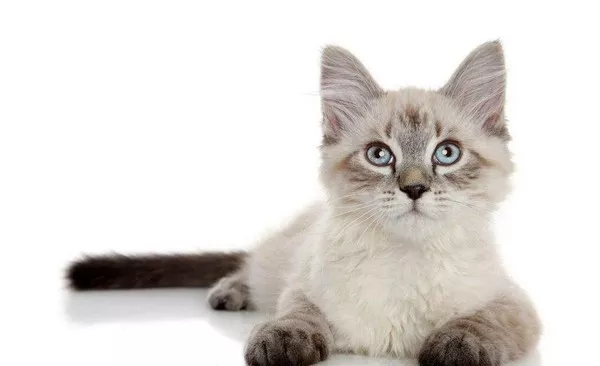Calico cats, with their striking coats of orange, black, and white, have captivated cat fanciers for centuries. Their unique appearance has inspired folklore, art, and even official designations, like the state cat of Maryland in the United States. But despite their widespread popularity, the exact origin of calico cats remains shrouded in a fascinating blend of genetics and historical speculation.
Unraveling the Genetics: The X Factor
The calico pattern is not breed-specific but rather a result of complex genetic mechanisms, primarily linked to the X chromosome. Female cats, possessing two X chromosomes, have a higher probability of exhibiting the calico pattern compared to their male counterparts who have only one X chromosome. Here’s why:
The genes responsible for orange and black fur are located on the X chromosome. Each X chromosome can carry only one of these color genes – either orange or black.
Females, with two X chromosomes, have the potential to carry both the orange and black genes, resulting in the calico pattern.
Males, with one X chromosome, can only express one color gene – either orange or black. For a male to be calico, he would need an extra X chromosome, a rare occurrence known as Klinefelter syndrome.
This genetic explanation clarifies why calico cats are predominantly female. It also explains the presence of white in their coats, which is governed by a separate gene that controls white spotting.
A Historical Puzzle: Tracing the Calico Trail
Pinpointing the precise origin of calico cats is challenging due to the lack of extensive historical records specifically focusing on coat colors. However, we can piece together some clues by examining the distribution of feline genetics and historical trade routes.
Early Domestication and Cat Migration: Genetic evidence suggests that cats were first domesticated in the Fertile Crescent region of the Middle East around 10,000 years ago. As human civilizations developed and trade routes expanded, domesticated cats, including those carrying the genes for the calico pattern, likely traveled alongside humans, gradually spreading across various continents.
Mediterranean Connections: Some researchers propose that calico cats may have been particularly prevalent in the Mediterranean region. This theory is supported by the historical presence of Egyptian cat breeds with similar coat patterns and the popularity of calico cats in countries like Italy and France.
Trade Routes and Genetic Diversity: The Silk Road, a network of trade routes connecting Asia and Europe, played a significant role in the exchange of goods and cultural influences. It’s plausible that cats, including those with the calico pattern, were transported along these routes, contributing to the spread of the calico coloration across different regions.
Calico Cats Around the World: A Global Phenomenon
Today, calico cats can be found in numerous countries across the globe, each region boasting unique folklore and cultural significance associated with these multicolored felines.
Japan: Calico cats, known as “mike neko” (three-fur cats), are considered lucky charms in Japanese culture. They are often depicted in art and folklore and are believed to bring good fortune and prosperity.
United States: In the U.S., calico cats hold a special place in Maryland, where they are recognized as the official state cat. This designation was inspired by the resemblance of their colors to the Baltimore oriole, the state bird of Maryland.
Ireland and Celtic Folklore: In Irish and Celtic folklore, calico cats are associated with good luck and are believed to ward off evil spirits. Their tri-colored coats are sometimes linked to the Celtic triple goddess symbol, representing the maiden, mother, and crone aspects of femininity.
These examples highlight the universal appeal of calico cats and their enduring presence in various cultures. Their unique appearance, coupled with their spirited personalities, has solidified their place as beloved companions and cultural icons throughout the world.
Beyond the Colors: Appreciating the Individuality of Calico Cats
While the genetics and history surrounding calico cats are undoubtedly fascinating, it’s important to remember that each calico cat is an individual with a unique personality and story. Their vibrant coats may be their most distinguishing feature, but their playful antics, affectionate nature, and independent spirit are what truly capture our hearts.
Whether lounging in a sunbeam or chasing after a feathery toy, calico cats continue to bring joy and companionship to cat lovers around the world. Their mysterious origins and captivating beauty serve as a constant reminder of the fascinating diversity and wonder of the feline world.
Related Topics:
























